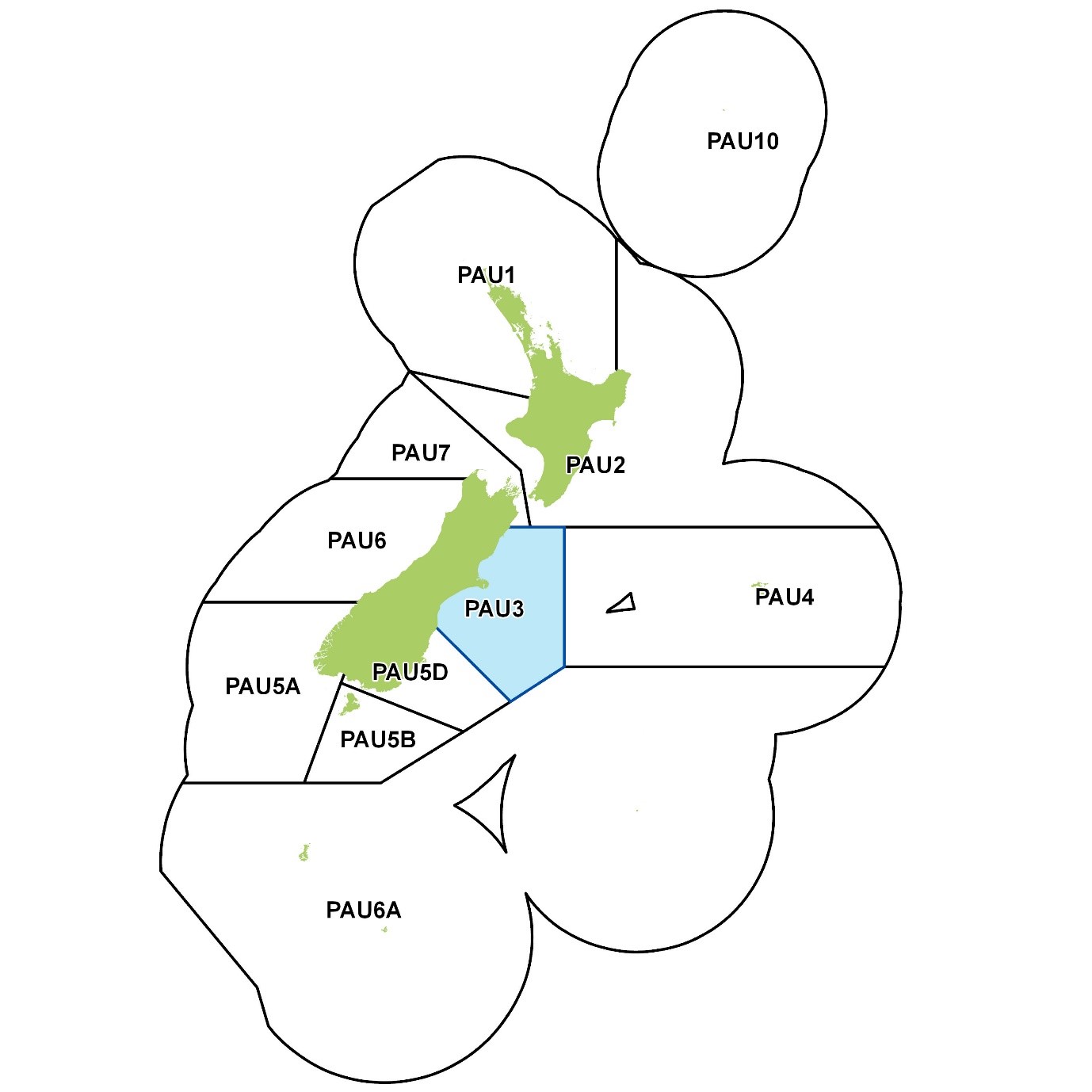Update – 31 July 2021
Fisheries plan for the Kaikōura/Canterbury pāua fisheries approved
The Minister for Oceans and Fisheries has approved a commercial fisheries plan for the Kaikōura (PAU 3A) and Canterbury (PAU 3B) pāua fisheries under section 11A of the Fisheries Act 1996.
The plan was developed by the PAU 3 Industry Association Incorporated (PauaMAC5) on behalf of all quota owners, ACE (annual catch entitlement) holders, and commercial harvesters. It allows for a more responsive and localised management approach in response to impacts of the Kaikōura earthquake for these important shared pāua fisheries.
The approved plan will operate under Fisheries New Zealand's existing management settings, within the constraints of the Total Allowable Commercial Catch (TACC) and adhering to the minimum legal-size limit (MLS). The plan formalises many of the voluntary measures already in place for each commercial fishery.
By approving the plan, the minister must take it into account before setting or varying any sustainability measure for each pāua fishery.
Kaikōura / Canterbury Pāua (PAU3) Fisheries Plan [PDF, 356 KB]
Why we consulted
Fisheries New Zealand sought your input into the draft pāua fisheries plan for PAU3 which has been developed by PAU3 Industry Association Incorporated (PauaMAC3) on behalf of all PAU3 quota owners and harvesters, and with the involvement and support of Ngāi Tahu, Te Korowai, and Fisheries New Zealand.
The fishery
PAU3 is the pāua fishery located along the Kaikōura and Canterbury coasts off the eastern side of New Zealand’s South Island. It extends from the mouth of the Clarence River in the north to the mouth of the Waitaki River in the south. PAU3 – South-East (Kaikōura Coast) is defined in Part 3 of Schedule 1 of the Fisheries Act 1996 (the Act).
The fishery was significantly affected by the Kaikōura earthquakes, in particular the northern parts of the QMA where uplift damaged habitat and caused extensive mortality to pāua populations. Pāua fisheries are highly valued by customary, commercial and recreational fishers.
The proposal
The draft PAU3 fisheries plan identifies the following issues facing the fishery:
- maintaining a sustainable fishery in the southern (open) portion of PAU3
- protecting the northern (closed) portion of the fishery while stocks rebuild
- developing a management regime to enable the closed area to be re-opened to pāua fishing on a precautionary, adaptive basis
- enabling the entire PAU3 fishery to be managed sustainably at its full potential.
Under section 11A of the Fisheries Act 1996 the Minister of Fisheries may approve a fisheries plan including objectives, strategies, and performance criteria, to support the purpose and principles of the Act.
A critical component of the PAU3 fisheries plan is the subdivision of the PAU3 QMA. Quota owners have requested that the PAU3 QMA be subdivided into 2 new QMAs to allow the setting of new catch limits (TAC, TACC and allowances) that take into account the changed nature of the fishery due to the earthquakes. Consultation on the PAU3 fisheries plan is being carried out in parallel with the proposal to subdivide the PAU3 QMA.
Consultation on the proposed subdivision of PAU3 Quota Management Area
Consultation document
PAU3 Fisheries Plan [PDF, 957 KB]
Background information
Voluntary arrangements have been part of the pāua industry's management and decision making in the PAU3 fishery for many years. The pāua industry seeks support for making these arrangements more formal by developing a fisheries plan for consideration under section 11A of the Fisheries Act 1996.
The key ministerial decisions relevant to the successful implementation of the plan include:
- re-opening of the earthquake-affected area closed to pāua harvesting under the Fisheries Act 1996 (‘the section 11 closure’)
- subdividing the PAU3 QMA under sections 25 and 25A of the Fisheries Act 1996
- setting and adjusting new catch limits (TAC, TACC and allowances) for the two new QMAs under sections 13 and 21 of the Fisheries Act 1996
- setting management controls for recreational pāua harvesting.

Download PAU3 QMA map [PDF, 119 KB]
Submissions are public information
Note, that any submission you make becomes public information. People can ask for copies of submissions under the Official Information Act 1982 (OIA). The OIA says we have to make submissions available unless we have good reasons for withholding them. That is explained in sections 6 and 9 of the OIA.
Tell us if you think there are grounds to withhold specific information in your submission. Reasons might include that it's commercially sensitive or it's personal information. However, any decision MPI makes to withhold information can be reviewed by the Ombudsman, who may tell us to release it.
MPI may post all or parts of any written submission on its website. We'll consider that you have consented to its publication, unless clearly stated otherwise in your submission.







